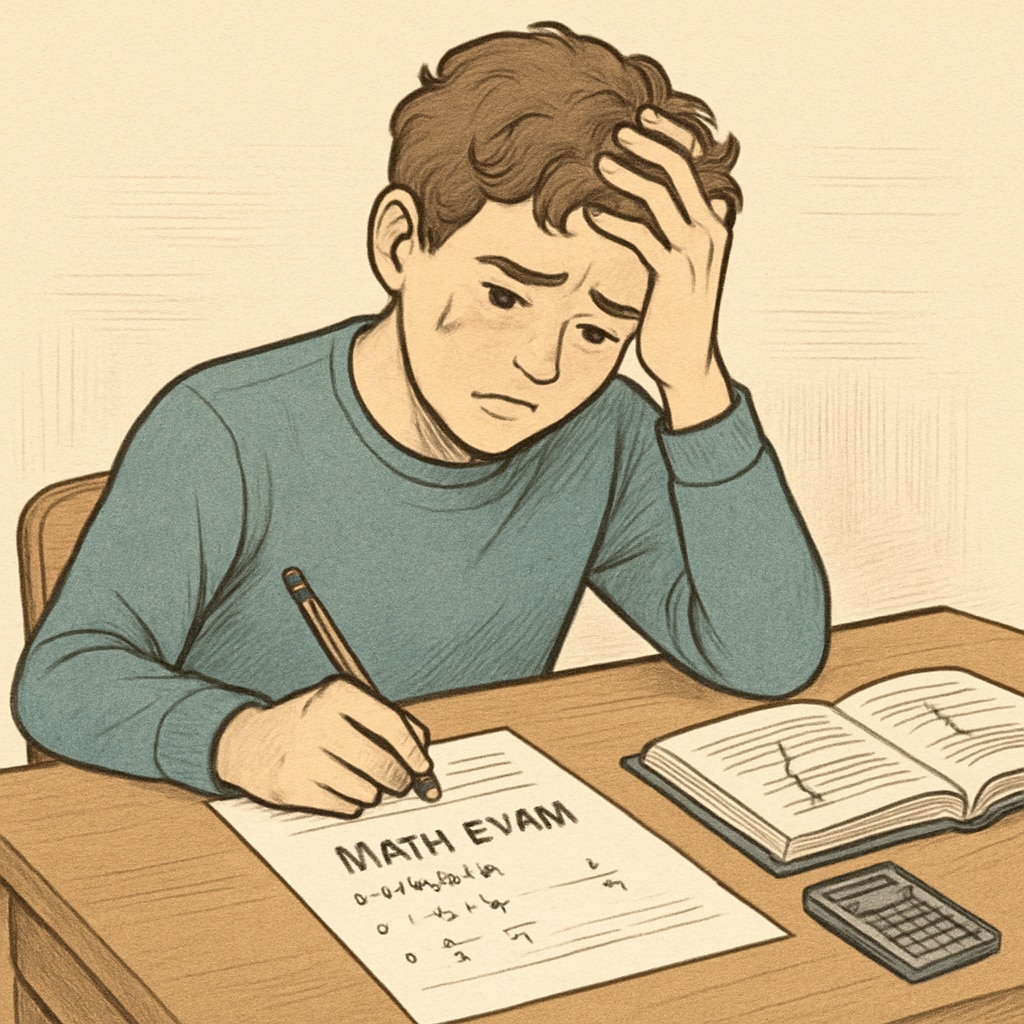Math anxiety, multiple-choice question barriers, and exam pressure are common challenges faced by students, significantly impacting their academic performance. These issues often create a cycle of fear and avoidance, making it harder for students to approach mathematics with confidence. In this article, we will explore the psychological mechanisms behind math-related anxiety, particularly its impact on multiple-choice questions, and share actionable strategies to help students regain control and succeed in math exams.
Understanding the Roots of Math Anxiety
Math anxiety is a specific kind of performance anxiety that triggers feelings of fear, tension, or helplessness when dealing with math-related tasks. According to research, this anxiety can stem from negative past experiences, societal stereotypes about math skills, or high-pressure academic environments. When it comes to multiple-choice questions, the time constraints and fear of selecting the wrong answer exacerbate these emotions, leading to a mental block that prevents clear thinking.
For example, students often overthink multiple-choice answers, doubting their instincts and second-guessing themselves. This mental conflict not only wastes precious time but also increases stress levels, further hindering their ability to focus. As a result, they may experience a decline in performance, even if they know the material well.

The Psychological Mechanisms Behind Multiple-Choice Anxiety
To address math anxiety, it’s important to understand the psychological mechanisms involved. One key factor is the fight-or-flight response, a natural reaction to perceived threats. For students, an upcoming math exam can trigger this response, causing symptoms like rapid heartbeat, shallow breathing, and an inability to concentrate. This physiological reaction can make it difficult to process information, especially in high-pressure scenarios like multiple-choice questions.
Another contributing factor is cognitive overload. During exams, students must simultaneously recall formulas, analyze problems, and evaluate answer options. For those with math anxiety, this cognitive load feels overwhelming, leading to a freeze response where they are unable to decide on an answer.
Strategies to Overcome Math Anxiety and Excel in Exams
While math anxiety can feel overwhelming, it is entirely manageable with the right strategies. Below are some practical steps students can take to reduce anxiety and improve their performance in multiple-choice questions:
- Practice Mindfulness: Techniques like deep breathing and meditation can help calm the fight-or-flight response. For example, taking a few deep breaths before starting an exam can lower heart rate and improve focus.
- Develop a Pre-Exam Routine: Create a consistent study schedule leading up to exams. Familiarity with math concepts and solving practice tests can boost confidence and reduce last-minute panic.
- Use the Process of Elimination: For multiple-choice questions, start by eliminating obviously incorrect answers. This simplifies the decision-making process and reduces cognitive load.
- Trust Your Instincts: Research suggests that a student’s first instinct is often correct. Avoid overthinking and learn to trust your initial judgment.
- Seek Support: If math anxiety persists, consider seeking help from a teacher, tutor, or school counselor. Professional guidance can provide tailored strategies to address specific challenges.

Rebuilding Confidence Through Positive Reinforcement
Overcoming math anxiety is not just about managing stress—it’s about rebuilding confidence in one’s abilities. Celebrate small successes, such as solving a practice problem or completing a section of an exam. Positive reinforcement can create a sense of achievement, which helps in breaking the cycle of fear and avoidance associated with math.
In addition, students should focus on progress rather than perfection. Mistakes are a natural part of learning and should be viewed as opportunities for growth rather than failures. Adopting a growth mindset can significantly reduce the pressure to perform perfectly, allowing students to approach exams with a more relaxed and positive attitude.
Conclusion: Turning Challenges into Opportunities
Math anxiety, multiple-choice question barriers, and exam pressure are challenges that many students face, but they don’t have to be permanent obstacles. By understanding the psychological mechanisms at play and implementing targeted strategies, students can overcome their fears, improve their performance, and even develop a newfound appreciation for mathematics.
Remember, the key to success lies not in avoiding challenges but in learning how to face them with resilience and confidence. With consistent effort and the right mindset, students can turn their struggles with math into opportunities for growth and achievement.
Further Reading: For more information on math anxiety and effective study techniques, visit Mathematics Anxiety on Wikipedia or check out Anxiety Overview on Britannica.


